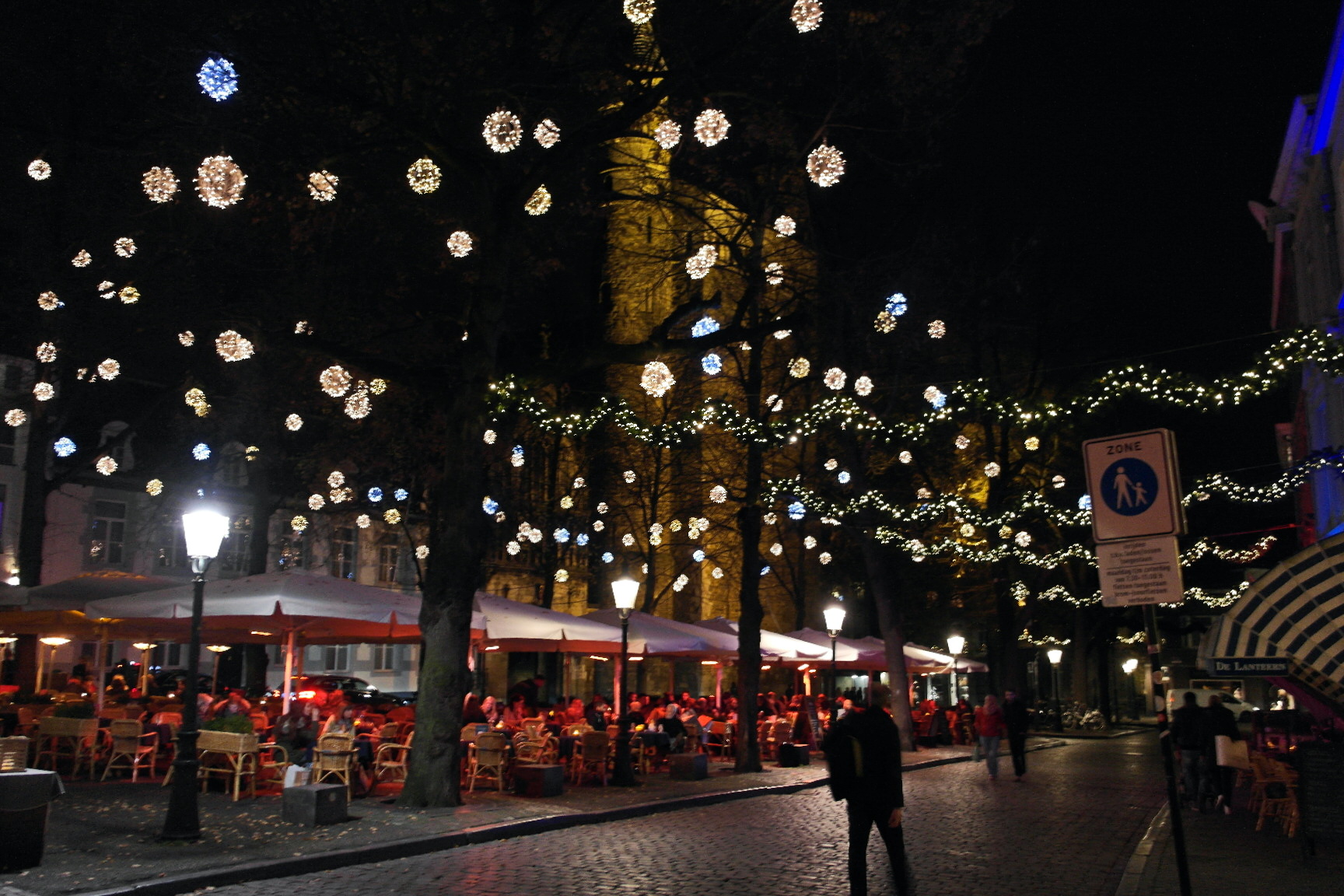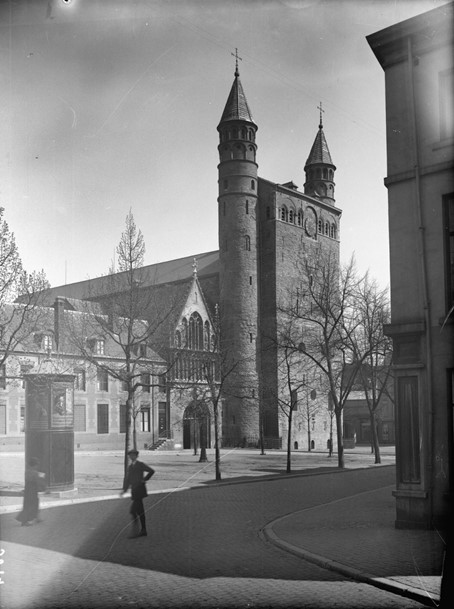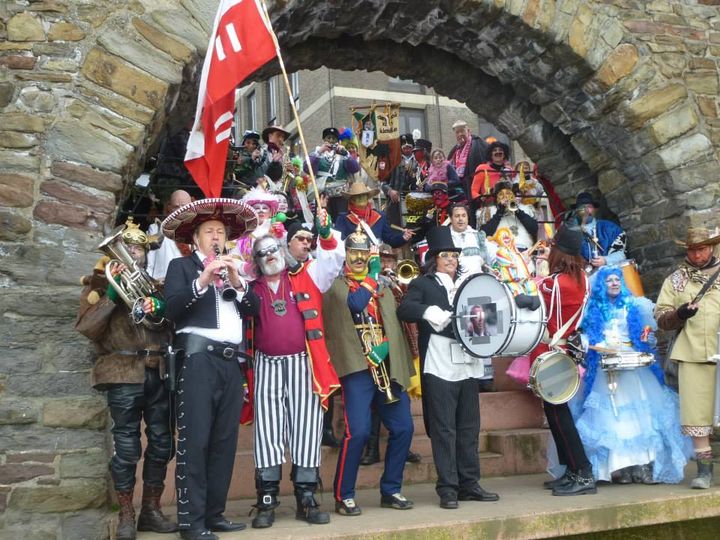
 |
| Fig. 14: The Onze Lieve Vrouweplein in Christmas setting in 2014 |
The current touristic state of the Onze Lieve Vrouweplein, with its terraces, parasols and cheerfulness has had several different appearances. However, it is only since the last 40 years that the square is as cheerful and inviting as it is now.
| Fig. 15: The space of the current terraces were used as parking lot in the 1970-ies |
In the 1970s, the square was a gravel plain, where it was full of parked cars, the city bus still drove past and the sign "main traffic route” (doorgaand verkeer) on an old photograph indicates a busy traffic circulation.
 |
| Fig. 16: In 1970 the square was still a flower and shrubbery bed |
A few years earlier, the square was still a beautifully landscaped garden and the streets looked freshly cleaned.
 |
| Fig. 17: The Onze Lieve Vrouweplein in 1917 |
At the beginning of the twentieth century, the square was neat and tidy and seemed to have been put out of use. There were hardly any cars in the city in those days, only for freight transport. People moved by gas tram, bicycle, horse and carriage, but mostly on foot.
| Fig. 18: The walled former graveyard with cannon carriages around 1740 |
In 1740, shortly before the French era (1795-1815), military objects were on display in the former cemetery: a series of carriages (mobile bases for ballistic cannons). Some drawings even show military artillery. Shortly before that, the space was still used as a cemetery but by this time it is no longer used in such a way. The history of earlier centuries can be found mainly behind the church.
| Fig. 19: The graveyard as drawn on the measurement drawing from 1749 |
That history goes five meters deep into the ground, until the beginning of the common era (CE). At that time, a wide Roman road ran here, which connected to a bridge over the Maas. The settlement that was situated along the road is still lying underneath the Stokstraat area. Today, in 2023, there are mainly terraces on the square. While there are no terraces on the square in the wintertime, there are many other activities.
For example, the square during carnival is full of costumed people during the day and especially in the evenings. 'Zaate hermeniekes' (carnival orchestras) pass by or play music in front of the door of the Merode Chapel. However, they don't enter the chapel as that would be considered inappropriate. But giving an aubade, or tribute poem, to the statue of Mary, Star of the Sea, outside in the street is certainly appreciated.
 |
| Fig. 20: Hermenieke “Veur de Bok zun Kloete” plays a carnival song during carnival 2022 |
Reference:
Ubachs, P.J.H., & I.M.H. Evers, Historische Encyclopedie Maastricht, Zutphen 2005.